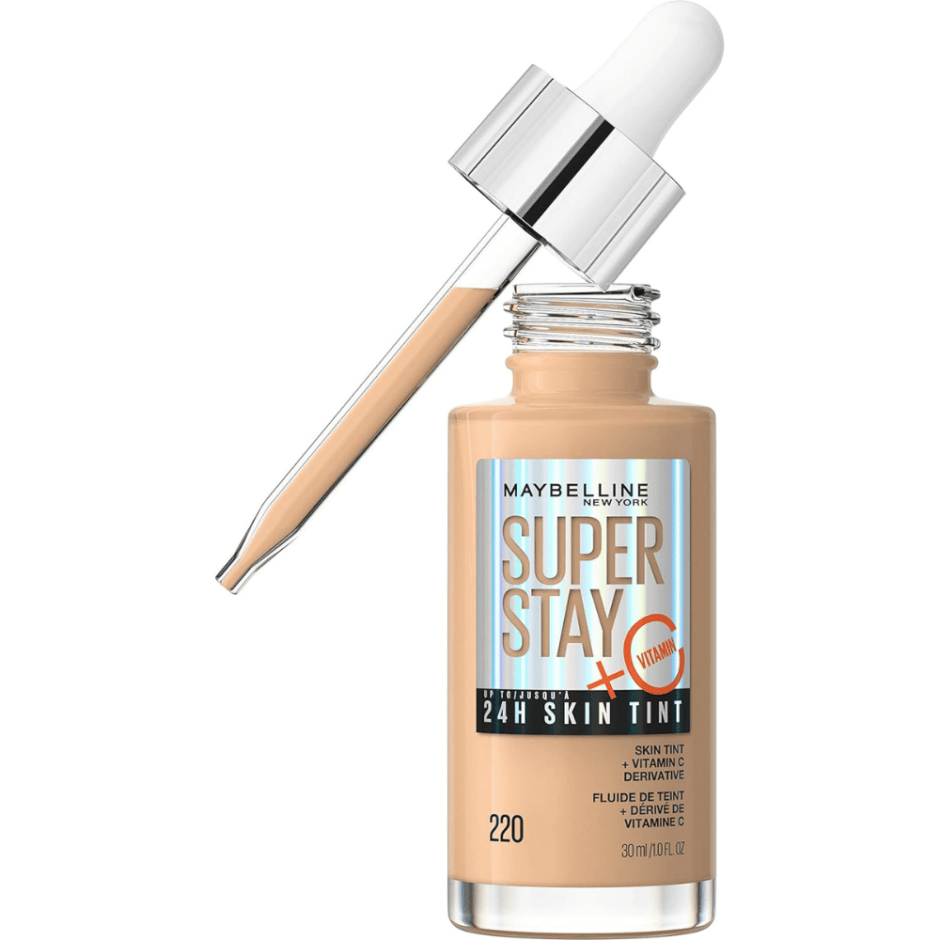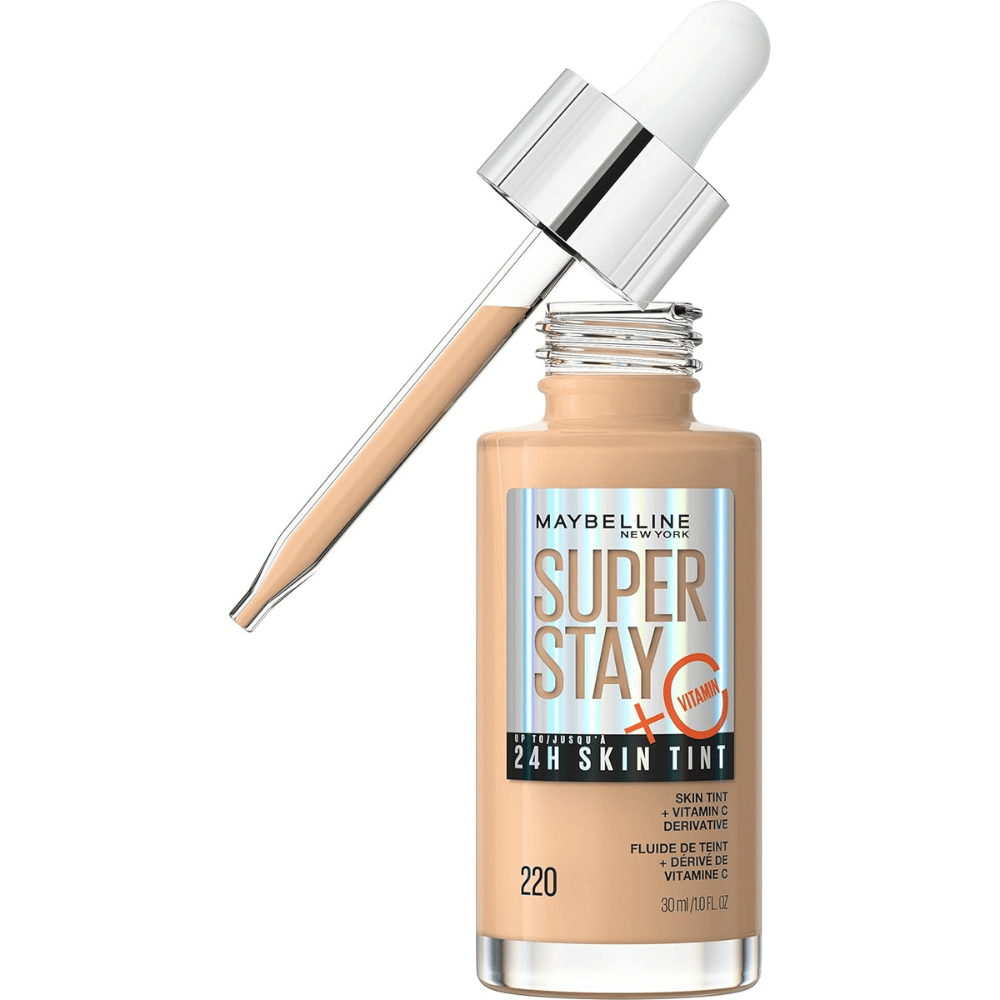Choosing the right foundation starts with a crystal-clear understanding of your skin tone. It’s not just about whether you’re fair, medium, or deep. Let’s dive into the world of undertones.
They’re those subtle hues that play a vital role in determining which foundation shade harmonizes with your skin. You’ll most often hear them categorized as cool, warm, or neutral.
Now what are overtones? That’s your skin’s surface color, which can change for a variety of reasons, including sun exposure or skin conditions.
You’ll want to factor in both overtone and undertone for a pitch-perfect match.
How do you figure out your undertone? It’s easy: look at the veins in your wrist. If they appear blue or purple, you likely have cool undertones. Greenish veins suggest a warm undertone.
If it’s hard to tell and they look somewhere between blue and green, you’re probably in the neutral zone.
But don’t decide on your undertone from inside your bathroom. Natural lighting is the unsung hero when it comes to assessing your skin tone honestly.
A quick glance in the daylight can reveal truths that artificial lights can distort.
And let’s not forget seasonal changes. Maybe you tan easily in the summer or go a shade lighter in the winter. It’s part of why you might need more than one foundation in your beauty arsenal to keep up with your changing skin tone year-round.
As you weave through these nuances, you’re gearing up for the next big step: Decoding foundation shades. It’s full of industry-specific lingo, and I’ll guide you through it seamlessly in the following section.
Decoding Foundation Shades: Navigating the Color Spectrum
Navigating the array of foundation shades on the market can often feel like trying to find your way through a maze. But don’t worry too much about the overwhelming options.
I’m going to help simplify things for you. Understanding how these shades are organized makes it a lot easier to pinpoint the right one for you.
Now what does shade numbering and labeling entail? Typically, foundation shades come with a numbering system that indicates the depth of the color: lower numbers usually mean lighter shades, while higher ones correspond to darker tones.
Then, labels frequently include a letter or a descriptive name giving you clues about the undertone they’re best suited for \’C\’ for cool, \’W\’ for warm, \’N\’ for neutral.
The relationship between shade depth and skin tone is a fundamental concept in choosing the right foundation. Choose something that resonates with you ‘ if your skin is fair, you’re likely gravitating towards the lighter end of the spectrum, and if it’s deeper, you’ll be checking out those with a higher number.
But it’s not just about the depth it’s also about considering your skin’s overtone, that is, the color that’s visible on the surface.
Recognizing overtone-friendly foundation options is another key step.
Brands are now offering more diversity in their ranges, so look for shades that are labeled with descriptions that resemble your overtone like beige, tan, golden, or chocolate. This will enhance your natural skin tone rather than mask it.
And how about the foundation ‘finish’? This isn’t just about color; it’s also about how the foundation will make your skin look. Matte finishes are great for oily skin types as they help to control shine, while dewy finishes can give that radiant glow to dryer skins.
A natural finish is a versatile choice, offering a balanced look that’s not too shiny or too flat.
The next step is taking these foundations for a test drive, yes, I’m talking about sampling. You’ll find out in the next section how to smartly sample foundations and get closer to nailing that perfect shade match.

Trial and Error: Sampling Foundations the Smart Way
If you want to find your foundation soulmate, sometimes a little trial and error is necessary. But I’m here to help you with strategies to streamline the process.
Choosing the right foundation is not just about swiping on a shade and hoping for the best; it’s about smart sampling and understanding how foundation interacts with your skin.
Let’s talk about avoiding the common pitfalls. The most frequent mistake? Testing foundation on the wrong part of your body.
Your face, neck, and jawline have different tones and are exposed to varying levels of sunlight. Another one to watch out for is the store lighting – it can be deceiving.
Always step outside with a mirror if possible, because natural light is the most telling.
Swatching is key. Apply a small streak of foundation from the center of your cheek down toward your jawline. You’re looking for the color that disappears into your skin without much effort.
And don’t wipe those swatches off too quickly – you’ll want to see how the foundation oxidizes over time as it interacts with your skin’s natural oils.
Digital try-on apps can be a godsend, especially now. Many brands have developed technology that allows you to virtually ‘try on’ shades from the comfort of your home.
These can serve as a good starting point, narrowing down the possibilities before you head to the store or order samples online.
Moving into the next section, I’ll guide you on applying your chosen foundation for a truly flawless match. We’re not just looking to color match here; we’re aiming for an undetectable blend that looks like second skin.
You’ll learn about tools, techniques, and even how to gauge the amount of product you need – all ensuring that your foundation enhances your natural beauty without masking it.
Application Techniques for a Flawless Match
I’m going to let you in on a little secret: nailing the perfect foundation application can transform a ‘meh’ shade into a ‘wow’ match.
It’s not always about having the spot-on color; how you put it on matters just as much. You’ll see why application can make or break your complexion game.
Choosing the right tools can have a big impact on the outcome. Brushes can create a polished, full-coverage look, while sponges offer a more sheer and dewy finish.
And don’t underestimate the power of your own fingers – they can be ideal for blending creamy formulas.
Blending is your best friend here. You’re going to find out that grounding your foundation appropriately not only helps with the color match but also with achieving that coveted natural look.
Be extra attentive around the jawline and hairline; these are tell-tale areas for mismatch.
Sometimes, one shade isn’t quite enough. Play around with layering, mixing, and transitioning between foundations.
It isn’t uncommon to use a lighter shade in the center of the face and a darker one towards the periphery. It’s not just about uniformity – it’s about enhancing your natural contours.
Now, as we’ve polished our application techniques, it’s time to think beyond the makeup vanity. The products we use can impact more than just our appearance for the day.
And that’s going to include considerations like the season, your environment, and even your diet.
Beyond the Bottle: Lifestyle and Environmental Considerations
Choosing the right foundation isn’t just about picking the perfect shade off the shelf – it’s also about adapting to the ever-changing conditions of your life and the environment around you.
As the seasons shift, you might find that your skin tone does too. That’s why it’s smart to have a lighter shade for the colder months and a deeper one for when you’ve caught a bit of sun in the summer months.
But it’s not only the outside temperature that can influence your skin; your diet and hydration levels play a vital role as well. When you’re well-hydrated and eating a nutritious diet, your skin will likely have a more consistent tone, which makes matching foundation more straightforward.
Rely on a healthy lifestyle to keep your skin in top condition, and you’ll find your foundation will look even better.
Sun protection is another critical factor. Not only does it shield your skin from harmful UV rays, but by preventing sun damage, you’re keeping your skin tone more even. Some foundations offer built-in SPF, which can be a convenient way to combine protection with perfection.
However, don’t rely solely on your foundation for sun protection – consider a separate sunscreen for comprehensive coverage.
Lastly, remember that a consistent skincare routine will not only improve your skin’s health but also ensure a smooth canvas for your foundation.
Gently exfoliating and moisturizing are key steps in preventing skin texture and tone changes that could affect your foundation match.
Embracing these lifestyle and environmental considerations will allow you to maintain that flawless foundation look day in, day out.


